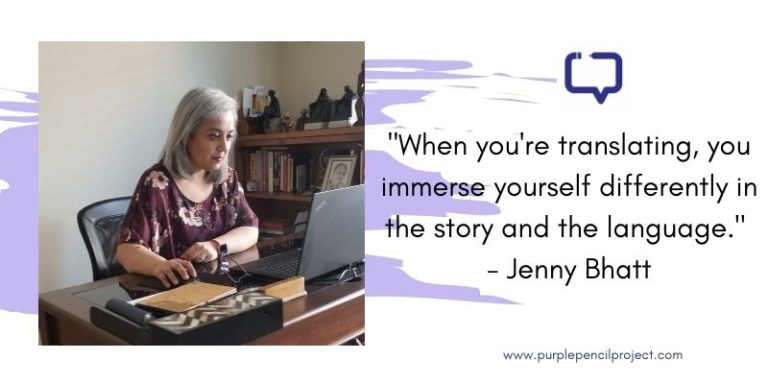As a child, Lavanya Karthik spent all her time writing stories in her school notebooks and drawing the pictures to go with them. She is now a slightly older child, still making up stories and drawing pictures. You can find her wandering about the bylanes of Mumbai, nibbling on chocolate, chatting with street dogs and looking for her next book idea. She is the author of several books, including Neel on Wheels, A Walk with Thambi and The Lion’s Feast, and is the creator of the Ninja Nani series.
How exciting is it to be back at the festival and on ground in the presence of kids? What are you looking forward to the most at Bookaroo?
Lavanya Karthik: Very! Bookaroo is always a wonderful experience, and a great place for authors to meet their readers and each other, and I am really looking forward to the Vadodara edition. I love interacting with children, listening to their ideas and questions and watching them get creative with paper and pencils. I am looking forward to my doodle Wall session on my book The Boy Who Played With Light, where we will explore shadows of different kinds.
As a writer and illustrator, how do you approach a children’s book? Can you take us through the process as to how do you start? Do you first write and then illustrate, or do it simultaneously?
Lavanya Karthik: I usually start with a central character, and develop my story around them, through both text and sketches. Each book is different; some have begun with an illustration of a character or incident, others with a line of text that make me curious about what comes after. I am also always looking for ways to make the illustrations do more, paring down text accordingly until I feel they strike a good balance with the visuals.
You are the creator of Ninja Nani. Can you share a bit about her and other creations of yours? Any personal favourites?
Lavanya Karthik: Ninja Nani began as a way to both create an unusual superhero and explore a narrative that flows between words and visuals in silly, unexpected ways. Each book adds more layers and characters to the Naniverse, with running gags and bizarre comics. Characters like Pongo and Mr Chitnis emerge as unlikely protagonists in their own side adventures. The Dreamers books look at some iconic men and women when they were impressionable, vulnerable children with the kind of fears and joys a young reader would be able to identify with. Each one of these books is different, and very special to me as they have all been unique adventures, so choosing a favourite would be difficult. But if I had to choose one character I feel closest to, I’d have to say – Pongo, the pug from the Ninja Nani series, with his own aspirations to suerherohood.
In a time when technology is an unavoidable part of our lives, what should parents/ teachers/ guardians do to ensure children cultivate a habit of reading? Or has what we define as ‘reading’ changed permanently?
Lavanya Karthik: I think the power of a good story remains unchanged, regardless of the way it is ‘read’ – be it as a book or a comic or even a movie. I think we need to focus on the pleasure a child feels at having their imagination teased, challenged, opened, by a story. Reading per se isn’t important; letting a child dream and run wild in their heads – that’s essential.
What are the next books you are working on currently? Any prominent names we can look forward to in the Dreamer series by Penguinsters?
Lavanya Karthik: Two books in the Dreamers series have just been released – on writer and activist, Mahasweta Devi, and on the flamboyant magician, P. C. Sorcar. I am currently working on Books 9 and 10 in the Dreamers series, and a longer, stand alone middle grade novel. I have a long, long list of people I’d like to write about in the Dreamers books, from very different walks of life – all under wraps for now!





















